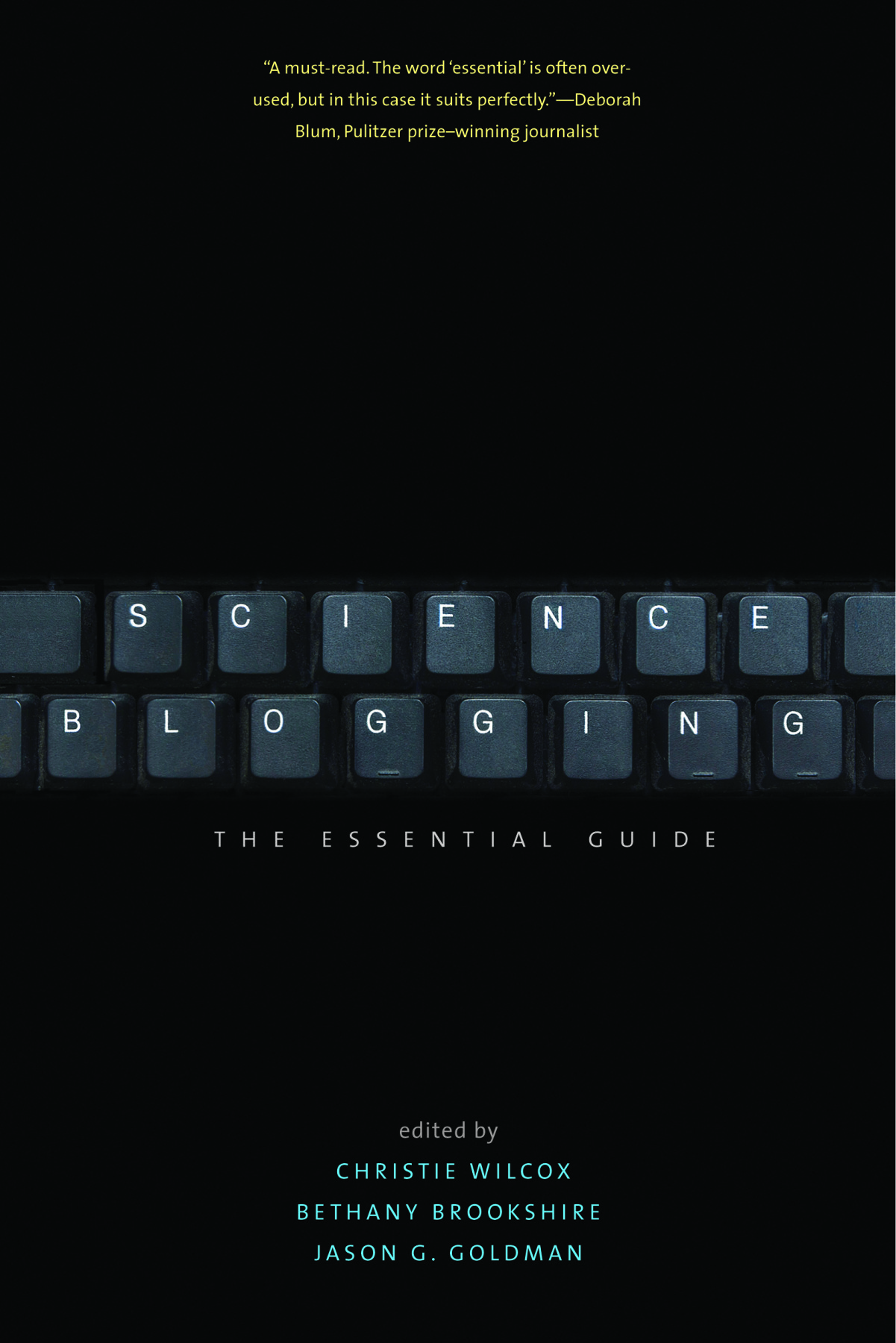
Seven new planets that orbit a faraway star—and three that could potentially host life. A shark that lives for 400 years. A vaccine for Ebola. The biggest science headlines each year are covered by hundreds of different news outlets. And since studies that gain more media attention are more likely to end up with more scientific citations, scientists are often eager to share their work with a science-curious public.
But no matter how big or small the headline, most science news stories gain attention because of a press release. It’s the job of a science public information officer (PIO) to get the word out about new scientific research and the scientists that conduct it. The releases PIOs write were once relatively hidden, distributed to reporters and media outlets behind the scenes. But with the rise of the Internet and the advent of social media, press releases have become accessible to anyone with an Internet connection. The repercussions of such unfettered public access to his work is one aspect of the job that PIO Matt Shipman thinks a lot about.
Shipman has written the book on being a science PIO—literally. He’s the author of the Handbook for Science Public Information Officers, and he writes a blog on science communication in addition to his work for North Carolina State University. He also contributed a chapter to Science Blogging: The Essential Guide on how to measure the impacts of online efforts. Here, he chats with Christie Wilcox about a career as a PIO and how what he and his colleagues do impacts consumption of science news.
When you ask kids what they want to be when they grow up, you don’t often hear “press officer.” How did you end up being a PIO?
My career path has been somewhat unconventional, if not haphazard. I graduated from college with a degree in English, followed my then girlfriend to Washington, DC, and applied for every job that I could find. I ended up getting a job working in the production group for a news company. I was reasonably good at it, but I did not like it very much. However, what the reporters were doing seemed like a lot of fun. I basically asked the editors there repeatedly to give me a chance as a reporter, even though I had never taken a journalism course or even worked for my school newspaper. At some point they decided that they would give me a chance, if only to get me to leave them alone.
Within a couple of days I had broken a story, and within a couple years I was running my own publication for the company focused on environmental policy issues, specifically pertaining to water. I did that for about 10 years. By that time my wife and I had relocated to North Carolina, and shortly thereafter, I went to work for NC State University. I really enjoyed being a reporter, but I like the stability in terms of my personal schedule that working a nine-to-five job gave me. I’ve been here for nine years now.
What would you say are some of the biggest differences between being a journalist and being a PIO?
The fundamental difference is that as a press officer, I am paid by the people that I write about. That’s unavoidable. I think in order to be a successful press officer, though, you need to be seen as trustworthy by people in the media world. That is a sort of a built-in reinforcement to ensure that I’m not disingenuous, because the second I lie to somebody and they find out—and they will find out—they’re going to stop listening to me. And I would not blame them. It is important for me to be intellectually honest about the things which I write about for NC State, but by the same token, I’m paid by NC State to write about NC State. There’s no way that I could be seen as an independent voice in that regard.

One of the other big distinctions is that what makes journalism truly valuable is that a good reporter is going to pull material from multiple sources, engage in critical thinking, and synthesize all of that information in order to explain a subject to the reader and why it’s important. To a certain extent a good PIO will do the same thing. But a reporter is going to be drawing from multiple sources and an institutional science writer usually is not. Even if an institutional science writer does draw on independent sources, there is always going to be the perception that they could have cherry-picked who they spoke to.
What do you find most rewarding about your job?
There are an awful lot of very good studies published in journals other than Nature or Science or Cell, or any of the other big names. Many people in the research community are not very good at letting people know about their work. One of the things that I really enjoy about my job is talking to people and finding out about these studies and about this work that’s being done, which is incredibly interesting and often very important, that no one outside of their subdiscipline would find out about if I wasn’t helping them share their story with people.
How has your job as a press officer changed over the past nine years?
The change has been fairly gradual, but there has been an increasing focus on developing material that’s seen as particularly attractive for social media. There’s been an increased focus on developing multimedia content, for example. But fundamentally, I don’t think [the job] has really changed.
There are a number of misconceptions, or what I believe are misconceptions, out there about writing on the Internet. For example, for a long time you would hear people saying, “Writing for the web needs to be short.” I think that’s baloney. You would hear people saying that you need to develop content specifically for social media. For the most part I think that’s baloney too.
I think you have to have good content. Period. If it’s a really good story, people will read it even if it’s long. If it’s a really compelling narrative, people will stick with it, even if it’s not whatever they were expecting on social media. I think that video and visual media content is extremely important in today’s media and marketplace, but I think it was extremely important in yesterday’s media and marketplace as well. There’s a reason that Life was an incredibly successful magazine for a really long time: People love pretty pictures. The tools for delivering the content have changed—but I think the content itself, or the type of content that’s successful, I don’t think that’s really changed very much.
If it’s a really compelling narrative, people will stick with it, even if it’s not whatever they were expecting on social media.
Do you think public access to press releases has altered how people consume science news?
Definitely. This has been very useful for me professionally, and very frustrating for me personally. I think journalism is really important. I think it’s the foundation on which a representative government is built, so ergo, [it] is the foundation of our society. What I’ve seen increasingly is the rise of so-called journalism sites that take content produced by me or by my peers and then slap it up on their website with no independent verification whatsoever. There are a lot of people, a lot of really smart people, who go to sites such as ScienceDaily or Phys.org to get their news, and they really seem to have no understanding that those sites are not journalism sites. They’re just cut-and-paste bulletin boards for PIOs. I try to do a good job, and most PIOs I think try to do a good job, but it’s no replacement for actual journalism.
Now, do I think that news releases have value or are useful in some way? Yeah, I do. They’re very useful within an organization so that everybody in the organization knows what’s going on, and I think that they’re useful for reporters because it allows them to get a quick assessment of what a given piece of research is about so that they can determine whether it’s something they want to pursue. I think where things get dangerous is when the public is not aware of the difference between a news release and a news story—an actual reported news article—or when reporters decide to take shortcuts, and cut and paste big chunks of a news release into a news story. That’s deeply problematic.
How can press officers, journalists, or both help clarify the distinction between press releases and actual journalistic reporting?
I think there’s no way to stop a site that reposts press releases from doing what it’s doing. I think that it’s very, very important for research organizations to clearly label news releases as news releases. I think that it’s very important for news outlets that run so-called sponsored content to clearly label that content as something that someone bought and paid for.
Beyond that, I’m not sure what can be done. I think PIOs need to take responsibility for their content, and for the most part I think they do. But that means trying to place the work in context, trying to explain why it matters, trying to clearly outline what the limitations of a given research finding are, and so on. We’re seeing a lot of work from Health News Review in this regard. (Full disclosure, I write for Health News Review). It would be interesting and potentially valuable to see something similar for other areas of research in addition to health.

Christie Wilcox is an award-winning science writer and one of three editors of Science Blogging: The Essential Guide. Her first authored book, Venomous: How Earth’s Deadliest Creatures Mastered Biochemistry, has garnered widespread acclaim including coveted spots on Amazon.com’s and Smithsonian’s roundups of the best science books of 2016. She also pens the Science Sushi blog for Discover, and her freelance bylines include Popular Science, The Washington Post, and Slate. Christie is based in the Seattle area. Find her at her website, or follow her on Twitter @NerdyChristie.


